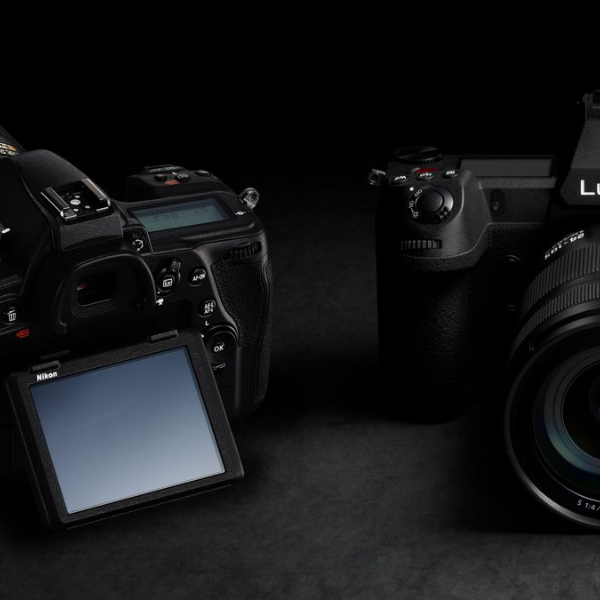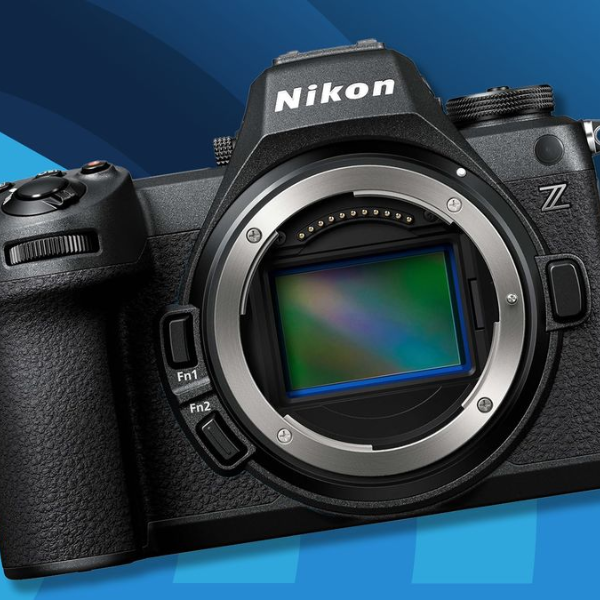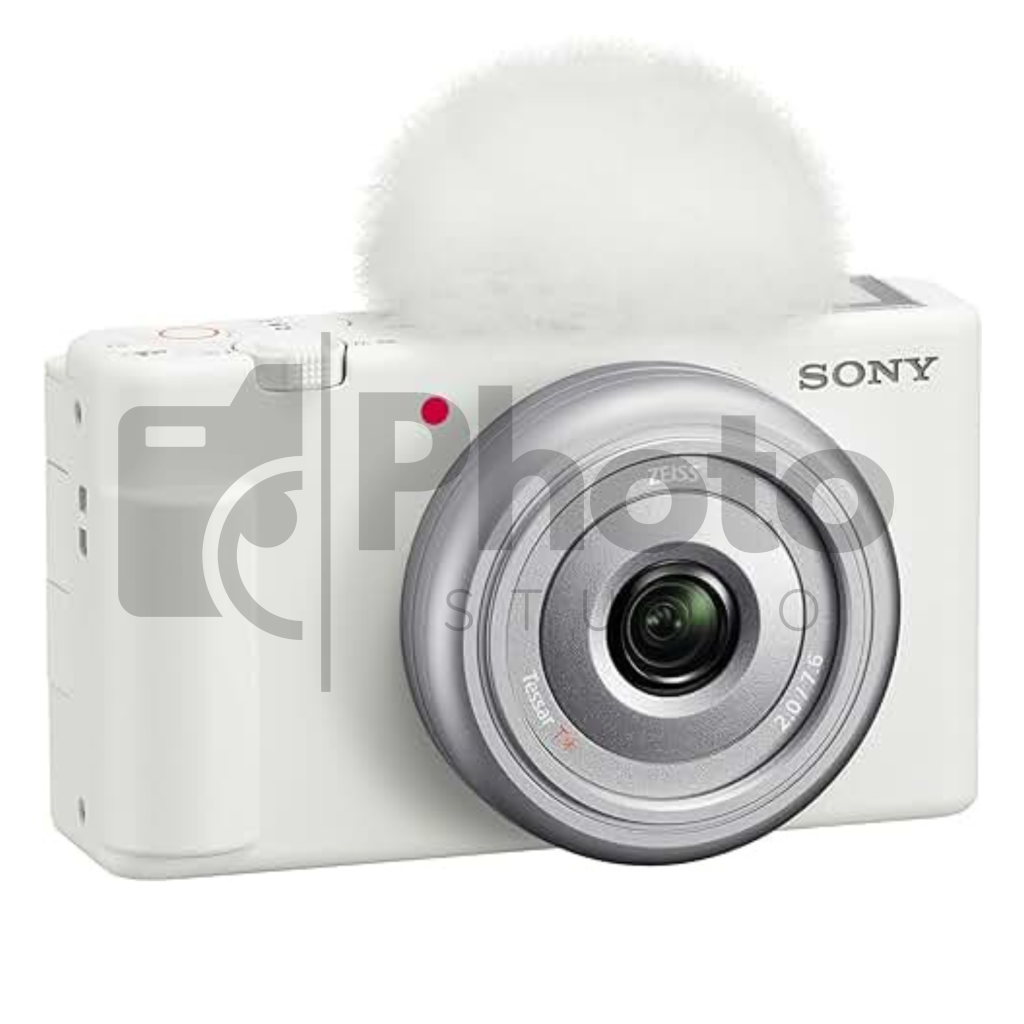DSLR vs Mirrorless Cameras – Which is Right for You?
When it comes to choosing a camera, one of the most important decisions you’ll face is whether to go with a DSLR or a mirrorless camera. Both types have their advantages and are suitable for different photography needs, but understanding their key differences will help you make the right choice based on your shooting style, budget, and preferences.
In this guide, we’ll break down the pros and cons of both DSLR and mirrorless cameras to help you decide which one is right for you.
What Is a DSLR?
A DSLR (Digital Single-Lens Reflex) camera is a type of digital camera that uses a mirror mechanism to reflect light from the lens up into an optical viewfinder, allowing photographers to see exactly what the camera’s sensor will capture. DSLRs are widely popular among photographers due to their versatility, image quality, and the wide range of lenses available for them. Here’s a detailed look at what makes a DSLR unique and why it’s often preferred by many users.
Key Features of a DSLR:
1. Single-Lens Reflex Mechanism:
- The most defining feature of a DSLR is the reflex mirror. In a DSLR, light enters the lens and is reflected off a mirror inside the camera. This allows the photographer to look through the optical viewfinder and see the exact scene that will be captured by the camera’s sensor.
- When you take a photo, the mirror flips up to expose the image sensor, capturing the light that has passed through the lens and creating a digital image.
2. Optical Viewfinder:
- Optical Viewfinder (OVF): The optical viewfinder allows you to see exactly what the lens sees in real-time, with no lag or delay. This provides a more natural, uninterrupted view of the scene compared to electronic viewfinders (EVFs) or LCD screens, which can have lag.
- This real-time view is particularly useful in fast-paced environments like sports photography or wildlife photography, where timing is critical.
3. Image Quality:
- Larger Sensors: Many DSLRs feature larger image sensors, like full-frame or APS-C sensors, which typically deliver better image quality in terms of detail, color accuracy, and low-light performance compared to smaller sensors found in many point-and-shoot cameras or smartphones.
- Interchangeable Lenses: DSLR cameras allow you to change lenses, offering flexibility for different types of photography, such as wide-angle lenses for landscapes, telephoto lenses for wildlife, or prime lenses for portraits. This makes DSLRs much more versatile than fixed-lens cameras.
4. Autofocus & Speed:
- Fast Autofocus (Phase Detection): DSLRs use phase-detection autofocus via the mirror mechanism, which tends to be faster and more accurate than the contrast-detection autofocus used in many other types of cameras (like mirrorless cameras). This allows DSLRs to capture fast-moving subjects with precision.
- Continuous Shooting: Many DSLRs offer high-speed burst shooting (several frames per second), which is great for capturing action shots or fast-moving subjects, such as in sports or wildlife photography.
5. Durability & Ergonomics:
- Sturdy Build: DSLRs typically have more rugged, heavier bodies, making them more durable for extended use, especially in outdoor conditions.
- Ergonomic Design: DSLRs often have larger grips and more tactile buttons and dials, providing better control and comfort for extended shooting sessions.
6. Longer Battery Life:
- DSLRs usually have longer battery life compared to mirrorless cameras, since they don’t rely on the electronic viewfinder or LCD screen for composing images. This is an advantage for photographers who need to shoot for longer periods without recharging.
Advantages of DSLRs:
- Image Quality: DSLRs typically offer superior image quality with larger sensors, better dynamic range, and the ability to shoot in low-light conditions.
- Lens Options: The availability of a wide variety of lenses and accessories allows users to customize their camera for specific photographic needs.
- Optical Viewfinder: The clear, lag-free optical viewfinder is preferred by many photographers, especially for fast-paced shooting.
- Performance: DSLRs often excel in autofocus speed and burst rate, making them suitable for action, sports, and wildlife photography.
- Battery Life: DSLRs tend to have much longer battery life, allowing for extended shooting sessions.
Disadvantages of DSLRs:
- Size and Weight: Due to the mirror and optical viewfinder, DSLRs are usually bulkier and heavier than mirrorless cameras, which may be a disadvantage for photographers who prefer a more portable setup.
- Mechanical Complexity: The mirror mechanism and mechanical parts can result in more wear and tear over time. In addition, these moving parts make DSLRs more prone to mechanical issues than mirrorless cameras, which have fewer moving parts.
- Live View & Video Limitations: While newer DSLR models have improved in video and live view performance, mirrorless cameras often have faster and more advanced video autofocus and live view experiences.
DSLR vs. Mirrorless Cameras:
- DSLRs have a mirror that reflects light up to an optical viewfinder. They offer fast autofocus (through phase detection) and great battery life.
- Mirrorless Cameras do not have a mirror and rely on electronic viewfinders or LCD screens for composing images. While they tend to be smaller and lighter, they often have slightly slower autofocus compared to DSLRs, although the gap has been narrowing with recent advancements in mirrorless camera technology.
Popular DSLR Models:
- Canon EOS Rebel T8i (EOS 850D): A great entry-level DSLR with strong autofocus, 4K video recording, and a vari-angle touchscreen.
- Nikon D850: A high-end DSLR known for its impressive image quality, resolution (45.7 MP), and professional-level features.
- Canon EOS 5D Mark IV: A professional-grade DSLR with excellent image quality, a robust build, and advanced video features.
- Nikon D7500: A mid-range DSLR that offers a great balance of performance, build quality, and image quality for enthusiasts.
Conclusion:
A DSLR is a powerful camera with a long-standing reputation for its image quality, versatility, and performance. It’s well-suited for photographers who require fast autofocus, high-quality lenses, and an optical viewfinder. While DSLRs tend to be larger and heavier than mirrorless cameras, they remain a top choice for professionals and enthusiasts who appreciate their proven reliability, fast shooting speeds, and exceptional image quality.
If you’re considering a DSLR, it’s important to evaluate factors like your specific photography needs, lens options, and your comfort with the camera’s size and weight.
DSLR stands for Digital Single-Lens Reflex camera. This traditional camera system uses a mirror mechanism to reflect light from the lens into an optical viewfinder. When you take a photo, the mirror flips up, allowing light to reach the image sensor. DSLRs have been around for years and have become a standard choice for both professional and amateur photographers.
Advantages of DSLR Cameras
- Optical Viewfinder:
DSLRs feature an optical viewfinder that gives you a real-time, true-to-life image of your scene. Many photographers prefer this because it doesn’t have any delay or lag, providing a smooth, natural experience. - Better Battery Life:
Since DSLRs do not rely on an electronic display for composing images, they typically offer longer battery life compared to mirrorless cameras. This is especially helpful for photographers on long shoots or when traveling. - Wide Lens Selection:
DSLRs benefit from a wide variety of lenses, many of which are compatible with both full-frame and crop-sensor cameras. This large selection allows photographers to choose lenses that best suit their needs, whether it’s wide-angle, telephoto, or macro lenses. - Rugged Design and Durability:
Many DSLRs are built to withstand the elements, making them ideal for outdoor or adventure photography. They often come with better weather sealing and a more rugged body than mirrorless models in the same price range.
Disadvantages of DSLR Cameras

- Size and Weight:
DSLRs are generally bulkier and heavier than their mirrorless counterparts. This can be a drawback for those who prefer lightweight gear, especially for travel or street photography. - Slower Autofocus in Live View:
DSLRs tend to have slower autofocus when shooting in live view or video mode, which can be frustrating for photographers who need fast and accurate focusing. - Mechanical Components:
The mirror and optical viewfinder system add mechanical complexity to DSLRs, which can lead to more wear and tear over time.
What Is a Mirrorless Camera?
A mirrorless camera is a type of digital camera that, as the name suggests, does not use a mirror mechanism like traditional DSLR cameras. Instead of a mirror flipping up to expose the image sensor, a mirrorless camera uses an electronic viewfinder (EVF) or the LCD screen to show a live preview of the image being captured. This design allows mirrorless cameras to be smaller, lighter, and more compact than DSLRs, while still offering excellent image quality and performance. Here’s an in-depth look at what makes a mirrorless camera unique:
Key Features of Mirrorless Cameras:
1. No Mirror Mechanism:
- Mirrorless Design: Unlike a DSLR, which uses a mirror and optical viewfinder, a mirrorless camera has no mirror. This allows light to pass directly from the lens to the image sensor. As a result, the camera can be smaller and lighter, making it more portable.
- Electronic Viewfinder or LCD: Since there is no mirror to reflect light to an optical viewfinder, mirrorless cameras rely on either an electronic viewfinder (EVF) or the LCD screen for composing shots. An EVF displays a real-time digital image from the sensor, while the LCD screen provides a live feed, both showing exactly what the sensor will capture.
2. Compact and Lightweight:
- Because there’s no mirror and optical viewfinder, mirrorless cameras are generally more compact and lightweight than DSLRs. This makes them appealing for travel photographers, street photographers, and those who prioritize portability without sacrificing image quality.
3. Advanced Autofocus Technology:
- Hybrid Autofocus: Mirrorless cameras often use a hybrid autofocus system, combining phase-detection and contrast-detection to achieve fast, accurate focusing. Phase-detection points (which detect the phase of incoming light) are often embedded directly in the image sensor, allowing for faster and more accurate autofocus, especially in live view and video mode.
- Faster and More Accurate Focus in Video: Mirrorless cameras tend to have superior autofocus performance in video mode compared to DSLRs because they rely on the image sensor for focus, rather than the mirror mechanism. This makes them ideal for videographers who need quick and reliable autofocus during video capture.
4. High-Quality Image Sensors:
- Like DSLRs, most mirrorless cameras feature large image sensors, such as full-frame or APS-C, offering high resolution and excellent image quality. These sensors produce sharp, detailed images with good low-light performance and a wide dynamic range.
5. Continuous Live Preview:
- The live view offered by mirrorless cameras provides a constant digital preview of your scene, meaning you can see how settings (like exposure, aperture, and white balance) will affect the image in real-time. This is different from DSLRs, where you need to take a shot to see the effect of settings in the final image.
- What You See Is What You Get (WYSIWYG): Because of this, mirrorless cameras are favored by many photographers who appreciate the ability to preview adjustments in real-time and make on-the-fly corrections to exposure or color balance.
6. Electronic Viewfinder (EVF):
- EVF (Electronic Viewfinder): Some high-end mirrorless cameras feature an electronic viewfinder, which offers an advantage over optical viewfinders in DSLRs. With an EVF, you can see a digital representation of the image as captured by the sensor, including exposure settings, focus peaking, and more. EVFs can be particularly useful in low light or when you need to see exposure settings directly in the viewfinder.
- EVFs also allow for features such as focus magnification and histogram overlays, making them helpful for precise focusing and exposure control.
7. Lens Options:
- Interchangeable Lenses: Like DSLRs, most mirrorless cameras allow you to change lenses, giving you the flexibility to choose lenses suited to your shooting style, such as wide-angle lenses, macro lenses, telephoto lenses, and prime lenses. The lens selection for mirrorless cameras has expanded rapidly as the technology has matured.
- While mirrorless cameras are typically available with a smaller selection of lenses compared to DSLRs, many manufacturers are investing heavily in new lens development for their mirrorless systems, expanding the range and options available.
8. Battery Life:
- Shorter Battery Life (Compared to DSLRs): One drawback of mirrorless cameras is their typically shorter battery life compared to DSLRs. Since mirrorless cameras rely on the electronic viewfinder or LCD screen for composing shots, they consume more power than the optical viewfinders in DSLRs, which do not require as much power.
- However, newer mirrorless cameras are improving battery life, and some models now offer more efficient power consumption.
Advantages of Mirrorless Cameras:
- Compact and Lightweight: Without the mirror and optical viewfinder, mirrorless cameras are generally much smaller and lighter than DSLRs, making them easier to carry for travel, street, or everyday photography.
- Silent Shooting: Since there is no mirror flipping up and down, mirrorless cameras can shoot silently, which is beneficial for quiet environments like wildlife or event photography.
- Faster and More Accurate Autofocus: Many mirrorless cameras have faster and more reliable autofocus, especially for video shooting, due to the use of on-sensor phase-detection points.
- Real-Time Exposure Preview: The live view allows for real-time exposure adjustments and accurate previews of how changes to settings (ISO, aperture, shutter speed) will impact the image.
- Electronic Viewfinder (EVF): The ability to see your exposure, white balance, and focus in the viewfinder in real-time offers great convenience, particularly in challenging lighting conditions.
Disadvantages of Mirrorless Cameras:
- Battery Life: Mirrorless cameras typically have shorter battery life compared to DSLRs because of their reliance on electronic viewfinders or LCD screens.
- EVF Lag and Refresh Rate: Some lower-end mirrorless cameras may experience lag or a lower refresh rate in their EVF, which can be distracting when composing fast-moving subjects.
- Lens Availability: While the lens selection for mirrorless cameras is expanding, some systems still offer fewer lens choices than traditional DSLR systems, though this is quickly changing with new releases.
- Electronic Viewfinder (EVF) Limitations: While EVFs offer many advantages, some photographers still prefer optical viewfinders for their clearer, lag-free real-time view, especially in challenging lighting conditions.
Popular Mirrorless Camera Models:
- Sony Alpha a7 III: A highly praised full-frame mirrorless camera known for its excellent autofocus, image quality, and video capabilities.
- Canon EOS R6: A high-performance mirrorless camera with impressive autofocus, 4K video, and in-body image stabilization (IBIS), perfect for hybrid shooters.
- Fujifilm X-T4: A popular mirrorless camera with excellent color science, high-quality 4K video, and in-body image stabilization, great for both stills and video.
- Nikon Z6 II: A powerful full-frame mirrorless camera offering excellent image quality, fast autofocus, and 4K video, part of Nikon’s new Z-series mirrorless lineup.
- Panasonic Lumix GH5: A video-centric mirrorless camera with 4K video recording, advanced features, and in-body stabilization, highly regarded for its video performance.
Mirrorless vs. DSLR:
- Size & Portability: Mirrorless cameras are more compact and lightweight because they lack a mirror mechanism, while DSLRs are bulkier due to the mirror and optical viewfinder.
- Autofocus: Mirrorless cameras often offer faster and more accurate autofocus in live view and video, while DSLRs traditionally excel in fast autofocus for stills due to their phase-detection sensors.
- Battery Life: DSLRs tend to have longer battery life, as they do not require the use of an electronic viewfinder or LCD screen for composing shots.
- Lens Selection: DSLRs have a more established lens ecosystem, but mirrorless cameras are quickly catching up, with many manufacturers releasing new lenses designed specifically for mirrorless systems.
Conclusion:
A mirrorless camera is an excellent choice for photographers who prioritize portability, advanced autofocus, and real-time image previews through the electronic viewfinder or LCD screen. With the ability to produce high-quality images and video, mirrorless cameras are gaining popularity among both enthusiasts and professionals. While they have some trade-offs, like shorter battery life, the advantages in terms of size, performance, and flexibility make them an appealing option for modern photographers.
If you’re looking for a lightweight, versatile camera for both stills and video, mirrorless cameras offer a compelling alternative to traditional DS
Mirrorless cameras have a more modern design that eliminates the mirror mechanism found in DSLRs. Instead, light passes directly through the lens to the image sensor. The image is then displayed on the rear LCD screen or through an electronic viewfinder (EVF), allowing you to compose your shots.
Advantages of Mirrorless Cameras
- Compact and Lightweight:
Mirrorless cameras are much smaller and lighter than DSLRs, making them a great option for photographers who need a portable system. This makes them ideal for travel, street photography, or any situation where size and weight are a concern. - Faster Autofocus:
Thanks to the lack of a mirror, mirrorless cameras can offer faster and more accurate autofocus, particularly during video recording and in live view mode. The autofocus systems in many mirrorless cameras are often superior to those in DSLRs, especially in low light or when tracking moving subjects. - Real-Time Exposure Preview:
With a mirrorless camera’s electronic viewfinder or LCD screen, you get a real-time preview of your exposure, white balance, and depth of field. This allows for more accurate exposure adjustments and better framing, especially in tricky lighting conditions. - Silent Shooting:
Many mirrorless cameras offer a silent shutter mode, which is ideal for situations where you need to be discreet, such as wildlife, weddings, or street photography. Unlike DSLRs, which have a mechanical shutter, mirrorless cameras use an electronic shutter that is virtually silent.
Disadvantages of Mirrorless Cameras
- Shorter Battery Life:
Because mirrorless cameras rely on an electronic viewfinder or LCD screen for composing images, they typically consume more battery power. This means you’ll likely need extra batteries for long shoots or travel. - Less Lens Selection:
While mirrorless camera systems are catching up, they still offer fewer lens options compared to the well-established DSLR systems. This may be a factor if you’re looking for specific types of lenses, although the gap is closing as more manufacturers create lenses for mirrorless cameras. - Electronic Viewfinder Limitations:
Although EVFs are improving, they still lag behind optical viewfinders in some cases. EVFs can have lower resolution or show a slight delay, which might not appeal to everyone, especially for fast-moving subjects or low-light shooting.
DSLR vs Mirrorless Cameras – Key Differences
| Feature | DSLR | Mirrorless |
|---|---|---|
| Size and Weight | Larger, heavier | Compact, lightweight |
| Viewfinder | Optical (Real-time view) | Electronic (Preview of exposure) |
| Battery Life | Longer | Shorter |
| Autofocus Speed | Slower in live view and video | Faster, especially in live view |
| Lens Selection | Wide variety | More limited, but expanding |
| Shooting Experience | Natural, real-time | Real-time preview, more customizable |
| Silent Shooting | No (mechanical shutter noise) | Yes (silent electronic shutter) |
| Video Capabilities | Limited autofocus in video | Excellent autofocus in video |
Which is Right for You?
- Choose a DSLR if:
- You prioritize an optical viewfinder for a more traditional, real-time shooting experience.
- You want longer battery life for extended shoots.
- You prefer a larger selection of lenses and accessories.
- Durability and weather resistance are important for your photography style (e.g., outdoor or adventure photography).
- Choose a Mirrorless Camera if:
- You want a compact and lightweight camera for travel or street photography.
- Fast autofocus and superior video features are important to you.
- You enjoy seeing a real-time preview of your exposure and other settings.
- You need silent shooting for discreet photography.
Conclusion
Both DSLRs and mirrorless cameras offer fantastic features, and the right choice depends on your specific needs. If you value portability, fast autofocus, and modern video features, a mirrorless camera may be the ideal option. On the other hand, if you prefer the classic feel of an optical viewfinder, longer battery life, and a broader range of lenses, a DSLR could be the way to go.
Whichever camera type you choose, make sure it aligns with your photography goals and offers the features you need to capture stunning images and videos.



